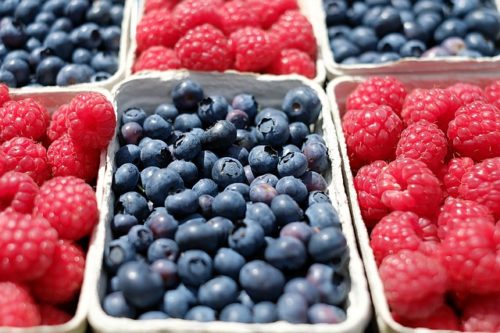FODMAP what? Have you heard? It’s the new dietary approach for the bloating and belly cramps seen with irritable bowel syndrome (IBS).
IBS affects one in seven Americans. It’s a gut condition which affects the flora in the bowels and causes abdominal pain, cramping, diarrhea or constipation, bloating, gas and overall discomfort and misery. It can be life changing and debilitating…jeans and spanx don’t stand a chance!
IBS has been treated in the past with drugs like Zelnorm that are now off the market, probiotics and prebiotics (that are expensive but all the rage), bulking agents and laxatives that fill the aisles of the pharmacy, low gluten diets, low dairy diets, you name it….you’ve probably even tried it! Unfortunately, the evidence behind any of the above interventions is limited and IBS sufferers are often left confused and helpless.
So how do we fight the bloat? Several studies in the past few years have shown that one effective treatment of irritable bowel syndrome is the low FODMAP diet.
A study by Dr. Anthony Lembo at Boston’s Beth Israel Deaconess produced strong evidence that a group of short-chain carbohydrates, called “FODMAPs” (Fermentable Oligo-saccharides, Di-saccharides, Mono-saccharides And Polyols… say this 25 times in one breath please) are problematic for those with IBS. These sugars are not well absorbed in the small bowel and are rapidly fermented by bacteria to produce gas, and hence the bloat.
The initial study showed that 75% of patients with IBS responded well to a low FODMAP diet and eliminated the bloat. Several large studies subsequently have also shown that a diet low in FODMAPs specifically reduces the amount of distention in the large and small intestines thus reducing the pain seen with IBS.
So what does the low FODMAP diet mean? Let me re-phrase: Is this the end of dinner and a movie on Friday? Heck no!
The diet means eliminating polyol- and fructose-rich fruits like mangos, apricots, and pears; sweeteners with a high fructose content such as corn syrup and concentrated fruit juice; soft un-ripened cheeses or ricotta; high fructan vegetables such as cabbage, eggplant, fennel, onions and garlic; galactan containing foods such as beans, chickpeas and lentils.
Great substitutes include bananas, blueberries, celery, carrots, bamboo shoots, tomatoes, brown rice, peanut butter, quinoa, polenta, hard cheeses, lactose-free yoghurts, sorbet, and tofu to name a few.
You can even look on the packaging of some foods now for the phrase “low FODMAP.” If you see that, feel free to add it to your shopping cart!
Is it hard to do? I can’t lie, but yes. But a low FODMAP diet can be tailored to meet the needs of every patient and can avoid expensive medications that may be laden with nasty side effects.
Is it worth it to fit back into my jeans for dinner and a movie? Totally!


